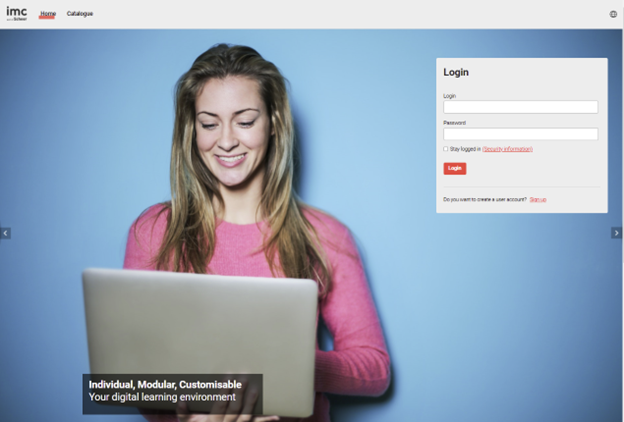Logging into the LMS
The imc Learning Suite supports many login methods and workflows. The configured login methods then determine how the user can access the LMS. The most basic form of login is the Local Login and most enterprise organisations would further integrate a Single Sign On interface where authentication takes place outside of the LMS.
The login itself can occur via a "Login" panel on the external dashboard.

Local Login
All users can theoretically access the LMS via local login where entering a correct "Login" and "Password" combination is required, but this can be disabled for systems where Single Sign On is in place. If local login is available there is a "Forgot your password" function that might be available if a password reset is required.
Some notes to consider with the local login method are:
Login and Passwords can be communicated in a welcome email on account creation;
Password validity is bound by length and characters (UPPER, lower, Numb3r, $pecia!)
Passwords can be subject to expiry requiring regular change.
Too many incorrect login attempts will cause a lockout period (default 30 minutes)
An administrator can manually reset if needed.
Single Sign On
Various types of single-sign-on are supported by the imc Learning Suite which can impact the login workflow. Most commonly there would be a "Login via SSO" button that when clicked will trigger a sign-in request with an external identity management system, but some single-sign-on scenarios (e.g. Windows authenticated) can bypass portal dashboard page and take the user directly into the LMS. Where a system only supports Single Sign On and a user is unable to login an administrator would need to ensure the account exists in the LMS and if so check that the account is active or there are no duplicate user accounts with a matching SSO identifier.
Hints & Tips
Local login settings are configured in the "Clients" function and can be performed by System administrators.
Single-sign-on interfaces are more complex and are configured by the imc Technical Services team and the customer"s technical team.
Supported Single-Sign-On methods include SAML2, OIDC, Windows Authenticated, LDAP, OAUTH, Facebook and Token based.
